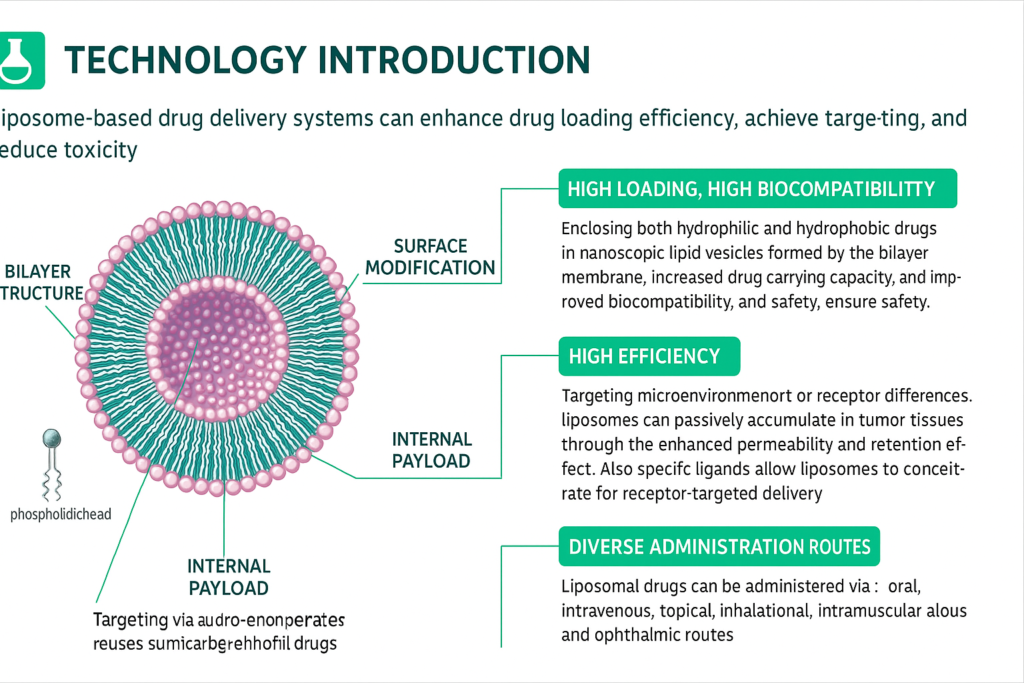Subtitle: Understanding Why Many Oral Nutrients Fail in the Digestive Tract and How Liposomal Technology Changes the Game
Introduction: Are You Really Absorbing What You Swallow?
Many consumers and nutrition brands face the same dilemma: even when a supplement contains adequate active ingredients, the health effects feel underwhelming or are undetectable in tests. The answer often lies in an overlooked battlefield—the gastrointestinal (GI) tract.
From acidic gastric fluid to bile salts and pancreatic enzymes, the journey through the digestive system is more hostile than most people realize. Unfortunately, traditional supplement formats are poorly equipped to withstand this environment.
Destructive Mechanisms in the Digestive System
Human gastric juice has a pH of 1.5–3.5 and can severely degrade sensitive ingredients like peptides, enzymes, antioxidants, and coenzymes. In the small intestine, bile salts and pancreatic enzymes such as lipase and phospholipase A2 further break down active compounds.
For example:
- Glutathione is highly prone to oxidation in gastric acid
- NAD+ and CoQ10 degrade quickly in alkaline pancreatic fluid
- Ingredients in capsules and tablets may partially degrade before reaching the small intestine
Why Conventional Supplements Often Fail
Although tablets, capsules, and powders are convenient for production and transport, they lack a protective mechanism for the digestive environment. This leads to:
- Low bioavailability: Studies show that many vitamins and molecules like glutathione have oral absorption rates below 20%
- Unstable effects: Absorption is highly variable and influenced by diet, digestive health, and individual metabolism
- High-dose inefficiency: Consumers must take large doses to feel a minor effect, increasing cost and reducing compliance
Liposomal Technology as a Biological Shield
Liposomes are microscopic spherical structures composed of phospholipid bilayers that mimic cell membranes, offering a natural mechanism for protective delivery.
- Acid- and enzyme-resistant: Liposomes remain structurally stable in gastric acid and digestive enzymes, protecting the encapsulated nutrients
- Sustained release and absorption: Liposomes adhere to intestinal mucus, extending retention time and widening the absorption window
- Barrier penetration: Liposomes can cross the intestinal epithelial barrier through adhesion, endocytosis, and membrane fusion

Supporting Data and Expanding Applications
- In simulated gastric fluid, liposomal NMN retained over 90% structural integrity after 2 hours
- Animal studies show liposomal resveratrol achieves plasma levels 3–5 times higher than conventional forms
- Liposomal versions of CoQ10 and glutathione have launched in Europe and the US, receiving high consumer ratings
Practical Insights for Brand Owners and Raw Material Suppliers
For dietary supplement brands, ODM manufacturers, or bulk ingredient suppliers, understanding the “oral failure pathway” can help:
- Craft differentiated product strategies
- Provide technical education to clients
- Refine sourcing criteria and testing priorities
📎 Recommended Reading:
- Oral Liposomes: How the Nutrients You Eat Get Absorbed by Your Body
- Why Reduced Glutathione Needs Liposomal Delivery to Work
- Do Liposomes Really Improve Absorption? Six Ingredient Comparisons